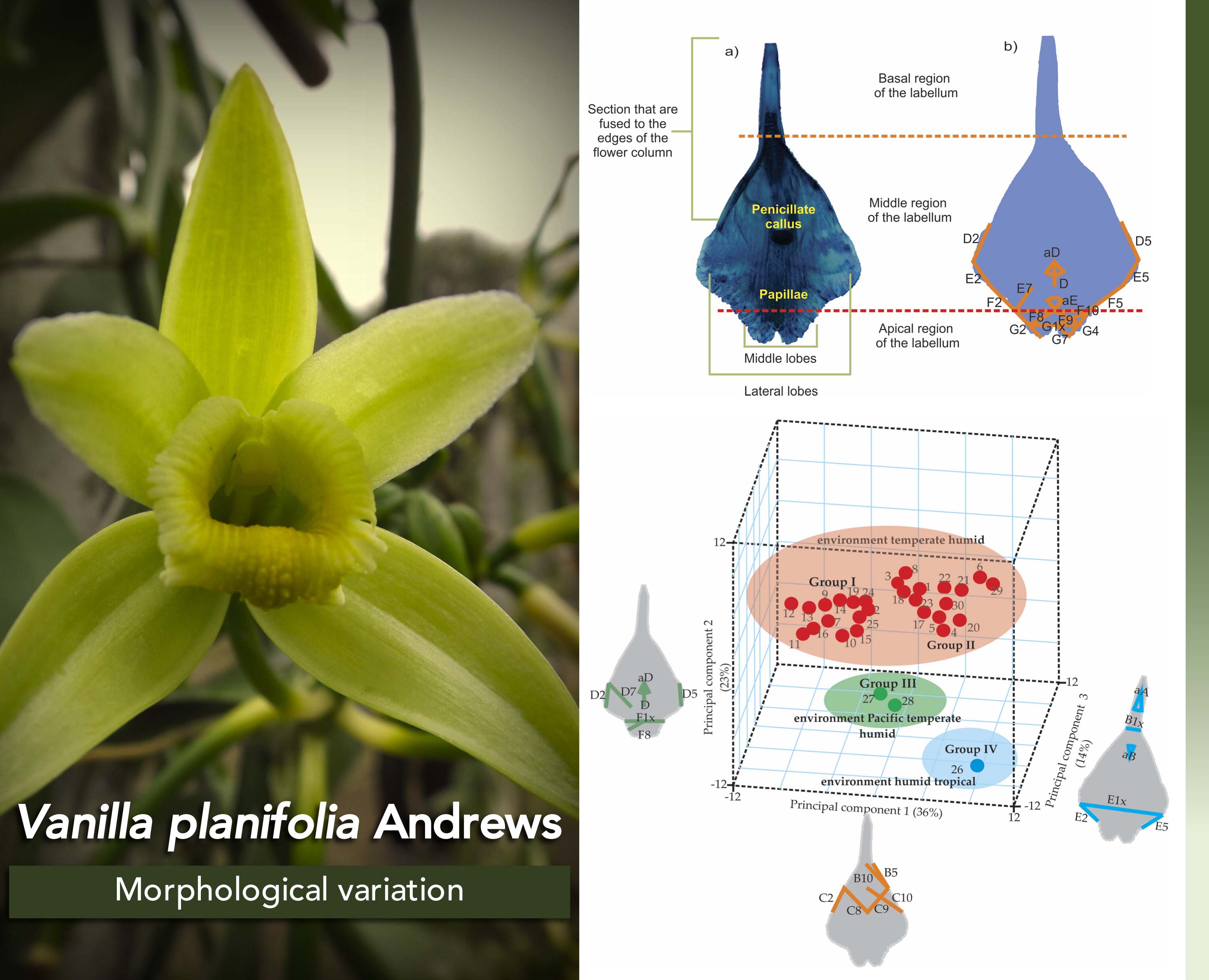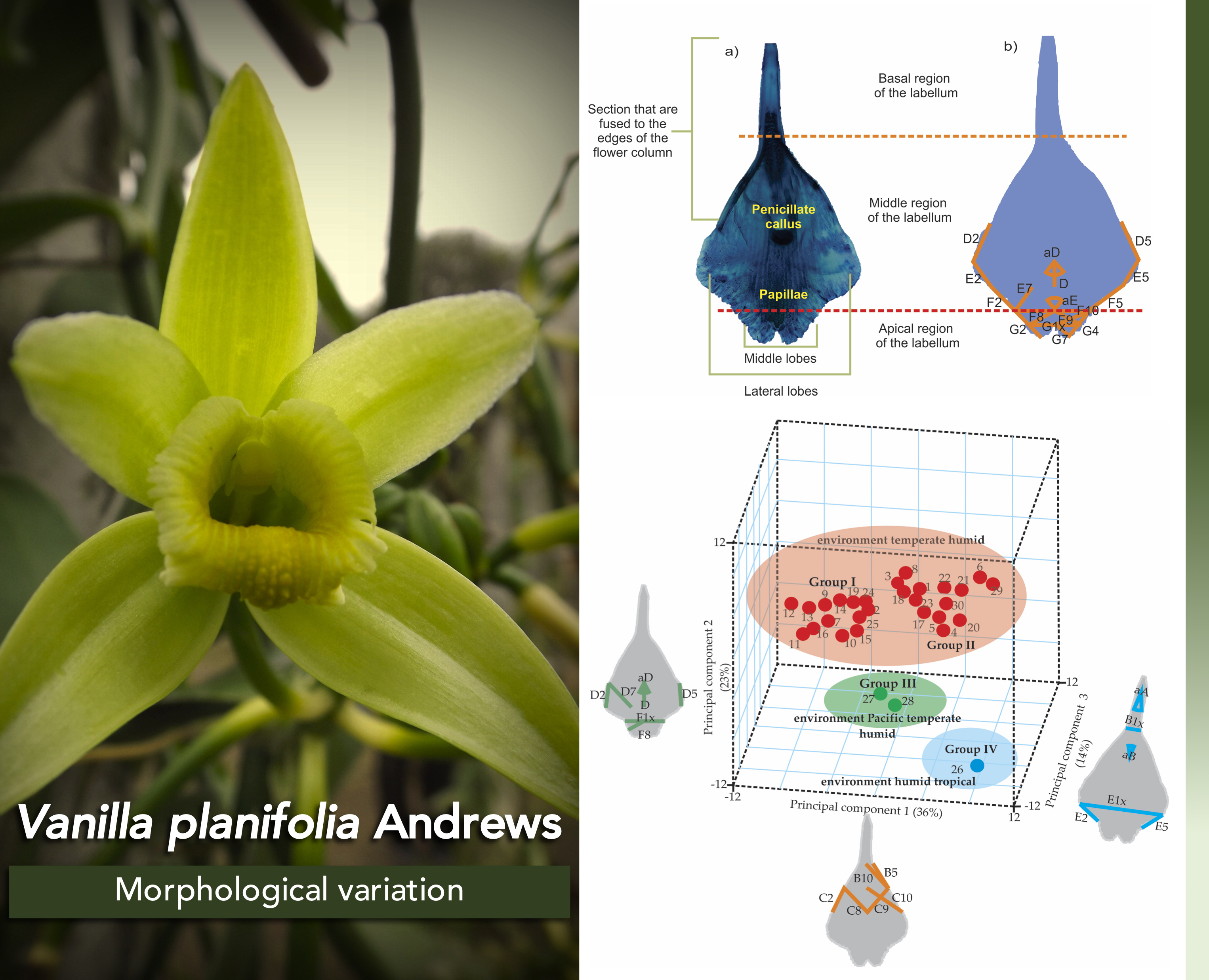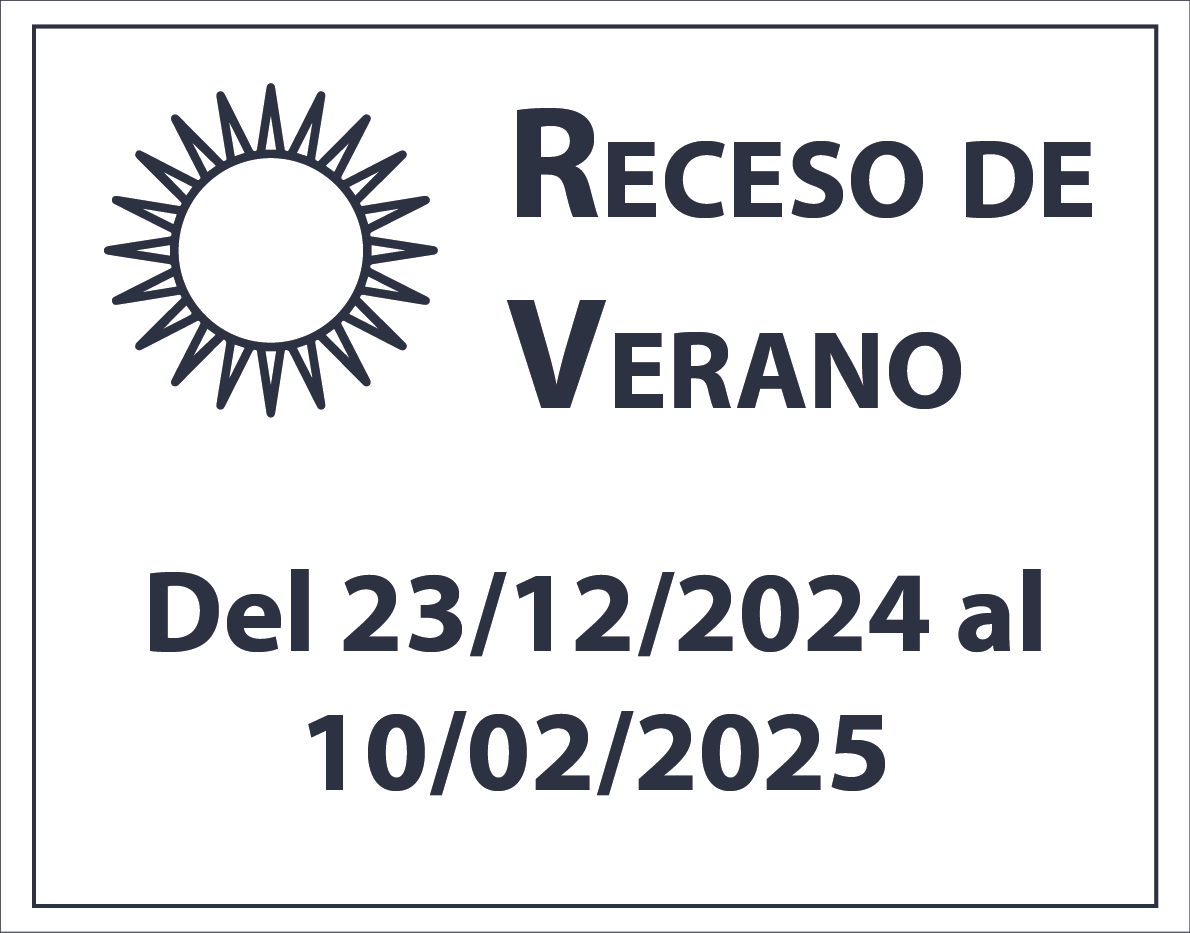Morphological variation of the labellum of Vanilla planifolia Andrews (Orchidaceae) in Oaxaca, Mexico
Palabras clave:
medio ambiente, fondo primario, morfometría, vainillaResumen

Infraspecific variation has transcendental ecological consequences for species adaptation to new niches. Estimating levels of variation is key for understanding the life history of a species, as well as for designing strategies for use and conservation. For this reason, the objective of this study was to characterize infra-specific morphological variation of the labellum of V. planifolia, of 122 flowers from 28 specimens from the state of Oaxaca and two specimens from Veracruz, Mexico. The labellum of each flower was dissected and analyzed by morphometry. Sixty variables were obtained and grouped into basal, middle and apical regions. An analysis of variance was performed considering the collections and the origin of each individual as sources of variation. Principal components and cluster analyses were also conducted. Differences in the 60 variables analyzed were highly significant among the collections. Among environments, 18 variables showed significant differences, which were situated in the lateral and middle lobes of the labellum. Thus, these structures were considered susceptible to environmental changes. The remaining 42 variables situated in the basal and middle regions of the labellum, which were fused to the edges of the floral column were not significantly different among environments. With the first three principal components, the model explained 73% of the total variation studied. Morphological variation of the flower labellum was represented by four morphotypes distributed in three environments.
Highlights
- The evaluation of vanilla flowers wild does not allow to have the same number of treatments or repetitions, for the inaccessibility of the species.
- Morphometric analysis of the labellum revealed infra-specific variation in the germplasm of Vanilla planifolia.
- The features of the basal and middle regions of the labellum are the most informative in distinguishing the variation between vanilla specimens.

Descargas
Publicado
Número
Sección
Licencia
Aquellos autores/as que tengan publicaciones con esta revista, aceptan las Políticas Editoriales.



